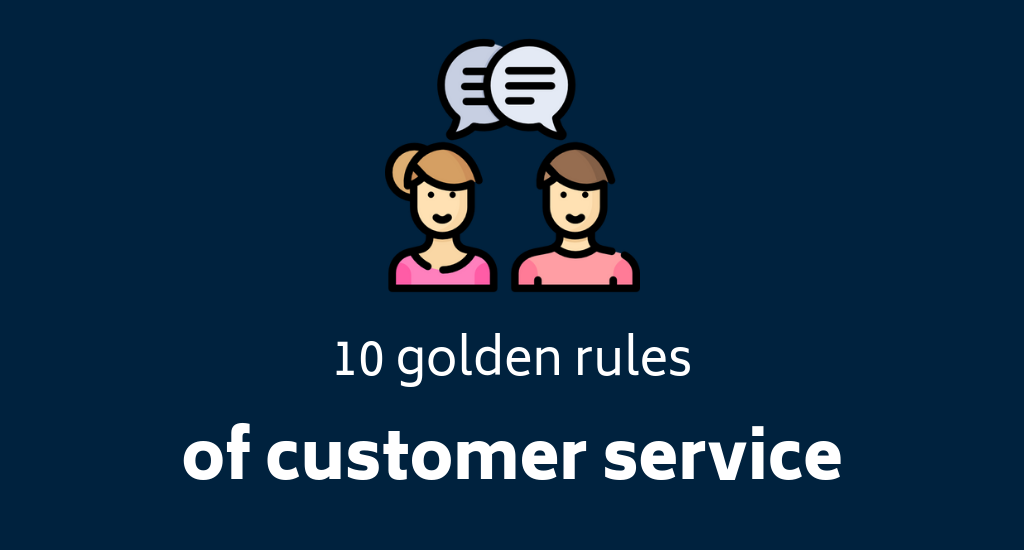Low prices and attractive products bring new customers, but great customer service makes them stay. Find out how to make their experience at your eCommerce unforgettable!
Strong brand, quality products and low prices draw clients to your online store – excellent customer service is what makes them stay and pass their good experience along to others. If you try hard enough, you can sell anything to anyone, but only once. In today’s competitive market, customer retention and favorable word-of-mouth are key to success. E-commerce is a long game. Believe it or not – caring for steady customers is cheaper than looking for new ones!
1. Provide convenient channels of contact
Some e-tailers treat their customer service duties like the necessary evil – they enable only one or two old-school communication channels (usually phone and email) and hope that no one will ever use them. Those merchants inhibit the growth of their businesses by not acknowledging one truth: eCommerce is all about building relationships with customers, and this is accomplished by staying in touch.
To stay on top of your game, make contacting you as easy as possible to a maximum number of clients. Be present wherever your customers are, and look for channels specific for your market segment. Let clients reach you via social media, review services, apps or even forums.
2. Don’t make clients wait
If you sell internationally, questions and complaints will come flying your way all day long. Customers don’t care about your “business hours”. For them, not knowing what’s going on with their case is sometimes more frustrating than receiving unfavorable consideration of the complaint. Handle social media messages, callbacks and emails as quickly as possible. In a small eCommerce business, it’s impossible to be available 24/7, but you can at least set a friendly autoresponder to inform a client when he or she will get his answer.
3. Know your products
If you sell things you know nothing about, you’ll have a hard time dealing with customer service expectations of people. Learn about your product and better yet – test it out yourself. Same goes for all your employees – introduce them properly not only to the refund policy but also to the details of how your product works.
Be an educator for your staff, and let them teach the customers. Don’t ever assume anything about clients – some of them do their research, others buy first and think later. To minimise the number of complaints and inquiries, make all the essential information about your product and company easily available online.
4. Don’t make promises you can’t keep
This rule is pretty straightforward, and yet so many people in customer service throw around empty promises, just to get a client off their backs. This accomplishes nothing except stirring customers anger and losing his or her trust. If you can’t predict when and how the issue will be resolved, then don’t pretend you can – just show your empathy and good will.
5. Be empathetic
Not every client expects empathy from customer service, but it never hurts to express it. It sends out a signal that you really care, and are willing to do everything you can to help. Write down phrases like “If I were in your position, I would feel the same as you do”, “I would be frustrated, too” and use them whenever the opportunity arises.
6. Don’t forget to apologize
Although apologies don’t make any difference to the case in question, they do change the tone of the conversation and make your client feel important. After all, everyone likes to be right. A simple “Sorry for the inconvenience” costs you nothing and can make customers more likely to deal with you again.
7. Resolve the issue
Patience is a scarce resource. If resolving a case is taking too long, then no amount of empathy will ease your client’s frustration. Be sure to provide your employees with all the means to resolve issues in a matter of days, not weeks.
8. Gather feedback
No one will tell you more accurately what is wrong with customer service at your company, than a dissatisfied customer himself. Ask for feedback after every resolved issue and analyze gathered answers to find possible shortcomings of your complaints handling procedure.
9. Diagnose the problem and eliminate it
Every complaint is a valuable insight regarding your products or services. Don’t throw away the opportunity to improve your online business. Based on the things that customers are complaining about, pinpoint the flaws of the checkout process, information flow, product, and delivery. Thanks to it you’ll be able to make informed decisions when introducing changes in the future.
10. Take care of your employees
The customer isn’t always right. Customers are people – they make mistakes and sometimes get angry for no valid reason. Some of them will try to vent frustration on a random person from support. Sadly, your employees might have to deal with yelling, accusations, lies and abusive language. When situations like this occur, always put your employees first. It’s good to have a steady customer, but not at any cost! Experienced, engaged, and happy employees are the real goldmine – they will get you thousands of new customers over time.
About the author

- Elliot
- Content specialist and gaming enthusiast. Trained to be a philosopher. Interested in Deep Learning, scalability and startups.






